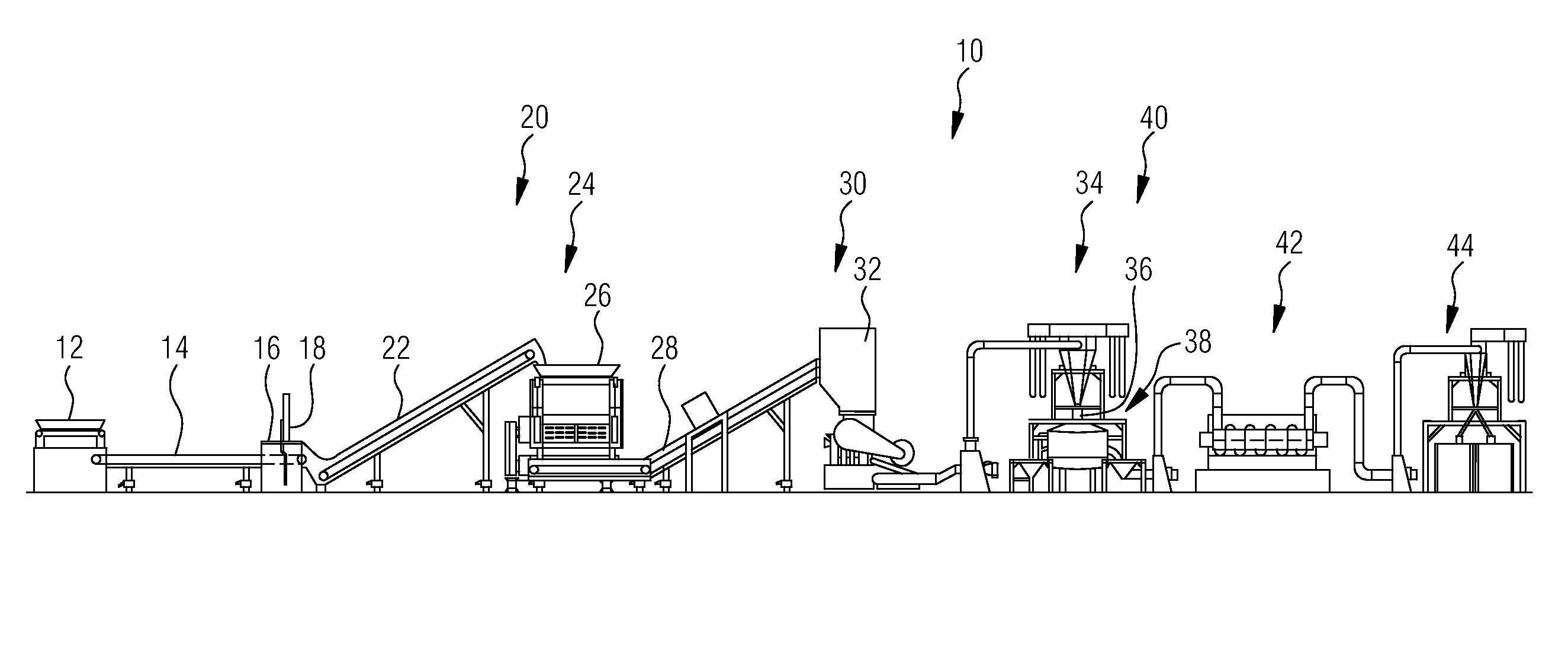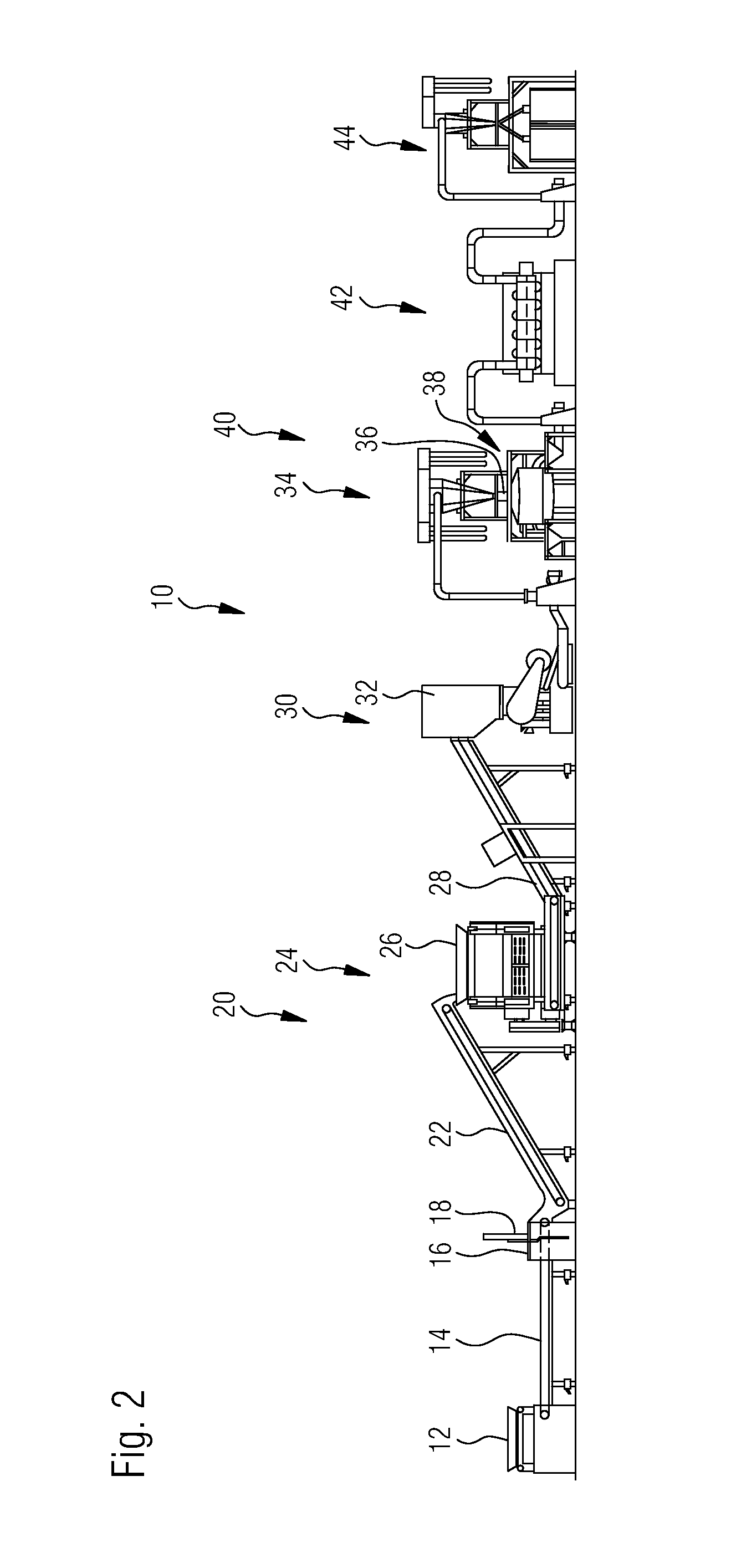Method and device for cleaning of paper machine clothing which is to be recycled
a paper machine clothing and cleaning technology, applied in the field of paper machine clothing cleaning and recycling, can solve the problems of affecting the quality of the produced paper, considerable cost factor, etc., and achieve the effects of convenient and convenient cleaning, convenient cleaning, and convenient cleaning
- Summary
- Abstract
- Description
- Claims
- Application Information
AI Technical Summary
Benefits of technology
Problems solved by technology
Method used
Image
Examples
Embodiment Construction
[0037]Referring now to the drawings, and more particularly to FIG. 1, there is shown a paper machine clothing B which is to be recycled after removal from a paper machine is provided at the beginning of the procedure illustrated by various process steps S. Depending on the specific purpose of service in the paper machine, in other words as forming fabric, dryer fabric, belt or press felt, clothing B can be a woven fabric or a composite of a woven fabric or another carrying structure including a nonwoven or felt type material. So-called spiral screens are also utilized as clothing in paper machines and can be recycled in the manner described below.
[0038]The structural material of paper machine clothing B of this type is generally polymeric material, for example PPS (polyphenylene sulfide) in the case of a spiral screen or PA (polyamide) in the case of a press felt.
[0039]Paper machine clothing P intended for comminution in process step S1 can first be cut into individual pieces, in or...
PUM
| Property | Measurement | Unit |
|---|---|---|
| particle size | aaaaa | aaaaa |
| particle size | aaaaa | aaaaa |
| temperature | aaaaa | aaaaa |
Abstract
Description
Claims
Application Information
 Login to View More
Login to View More - R&D
- Intellectual Property
- Life Sciences
- Materials
- Tech Scout
- Unparalleled Data Quality
- Higher Quality Content
- 60% Fewer Hallucinations
Browse by: Latest US Patents, China's latest patents, Technical Efficacy Thesaurus, Application Domain, Technology Topic, Popular Technical Reports.
© 2025 PatSnap. All rights reserved.Legal|Privacy policy|Modern Slavery Act Transparency Statement|Sitemap|About US| Contact US: help@patsnap.com



